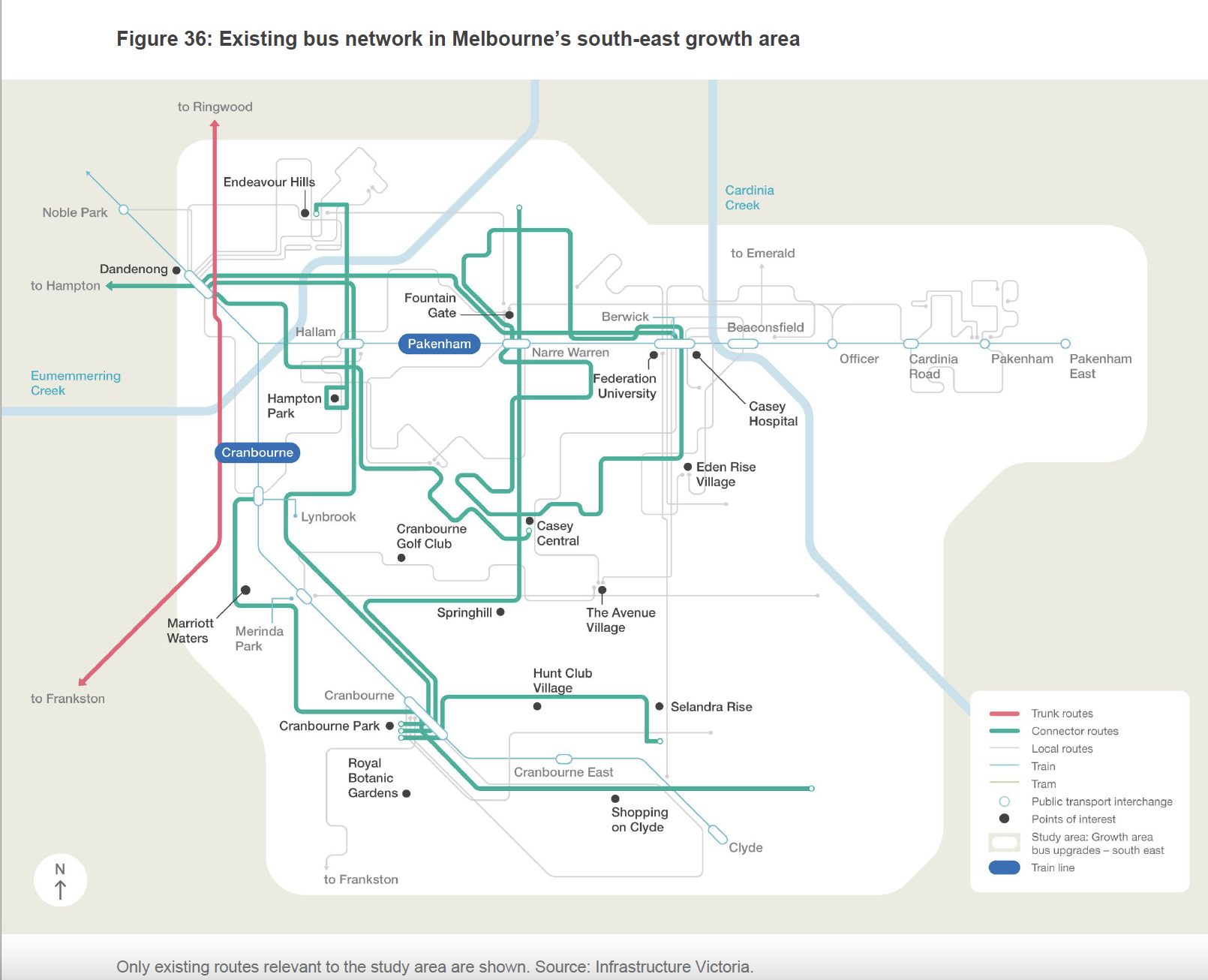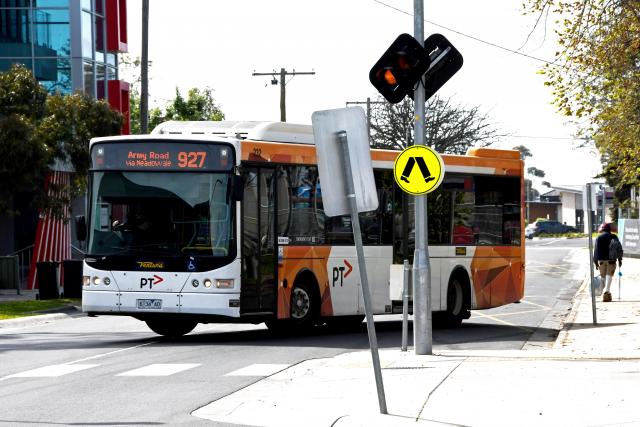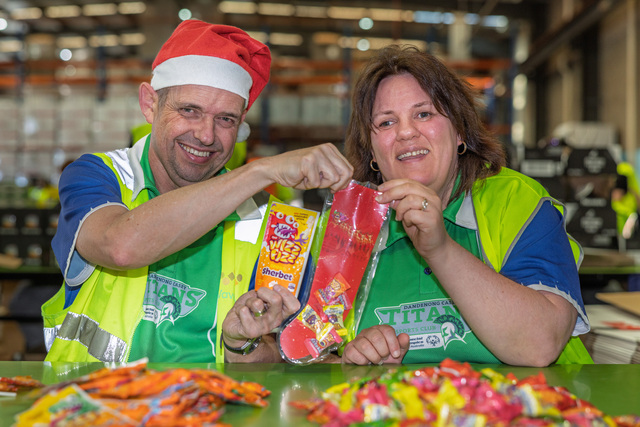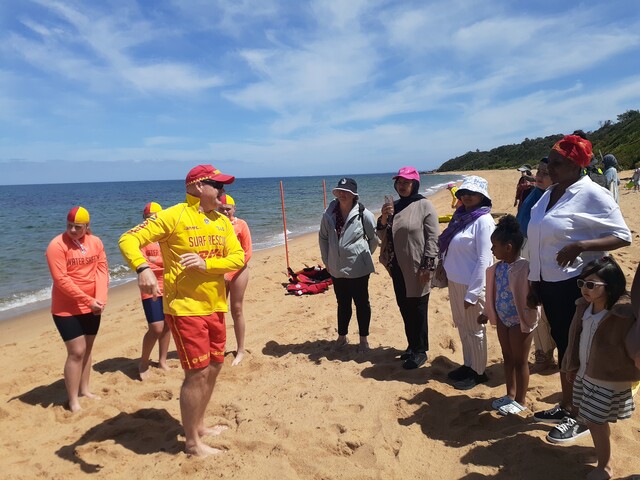The state’s peak infrastructure body is calling for funding for a high-quality bus network in Casey to link to jobs, cut car costs and reduce commuting times.
A report from Infrastructure Victoria (IV) has proposed increased frequency, longer operating hours, extra bus lanes, and more direct routes for growth areas like Casey.
The report highlighted that current service levels did not adequately support Casey’s population, let alone the projected 200,000 new residents over the next decade.
According to its statistics, most areas in Casey had the lowest levels of public transport service provision across Melbourne.
“Many growth areas with low public transport service provision from 2016 are still facing the same challenges close to a decade later.”
Residents in Melbourne’s outer and new growth areas have limited alternatives to private transport and higher-than-average car ownership which leads to extra fuel costs, the report disclosed.
Many of them spend upwards of 15 hours each week commuting, mostly by private vehicle.
Despite the bus being the only viable public transport option, growth area residents were found less likely to catch the bus compared to those living in established areas in Melbourne.
Currently, about 12 per cent of Casey residents are waiting for a bus service less than 10 minutes during weekdays.
Many existing routes in Casey are indirect and winding, prioritising coverage rather than competitive travel times, according to the report.
One of the proposed reforms was to increase bus frequency and ‘faster trunk route connections between activity centres, industrial precincts, and train stations’.
It would significantly reduce wait times in the targeted areas in Casey and the proportion of residents waiting for 10 minutes or less would increase from approximately 12 per cent from the existing situation to 72 per cent.
The IV report also modelled tripling bus service hours as well as better links to Cardinia and Greater Dandenong, and the Pakenham and Cranbourne train lines.
It was estimated to increase the number of bus boardings by approximately 40 per cent in Casey.
The improved bus network would contribute to better accessibility to jobs and services for residents, the report suggested.
The report found many outer suburb residents were forced to trade off access to education, health, and childcare serves due to a disproportionate amount of their income on private travel.
Under the triple-service-hours model, residents in Narre Warren North and Hampton Park could access an additional 98,500 jobs within a 45-minute travel time by public transport. Residents in Cranbourne North, Officer, and Lyndhurst could also benefit from an additional 44,700 accessible jobs within 45 minutes.
“Mobility and trip making improves social inclusion and reduces neighbourhood disadvantage,” the report stated.
“Social exclusion influences economic and social factors such as employment status, access to social support and community participation.”
The report flagged cheaper bus fares, with a 19 per cent rise in boarding per $1 fare reduction.
Public Transport Users Association spokesperson Daniel Bowen said Casey was in dire need of better public transport options.
“For some journeys the train can be used, but for many people who live too far from a station, or are making trips not served by rail, the only current option is to drive,” he said.
“A shake-up of routes, and more frequent services, not just on weekdays but also on weekends, would help provide people with more options.”
City of Casey chair of administrators Noelene Duff PSM said the community deserved accessible and affordable public transport to get to and from work, school and the services they need.
“This year, we have already seen some improvements to the bus network in Casey,” she said.
“Route 863 between Endeavour Hills and Hampton Park has been extended almost nine kilometres south along Hallam Road and Evans Road to Cranbourne West Shopping Centre, connecting to shops, education, schools and other transport services, while Route 895 between Narre Warren South and Fountain Gate has also been improved to service the Casey Business Park in Narre Warren when travelling between Narre Warren Station and Fountain Gate Shopping Centre.
“These bus routes were identified by council as being most needed, so we’re pleased that these improvements have made travel easier for community members along these routes.”
She said Casey’s rapid population growth was leading to record car ownership and increased pressure on our community’s roads and transport network.
“We look forward to continuing to work with the State Government to improve the wider bus network in Casey, and we will continue to advocate for more buses to run more frequently to connect our city’s growing communities,” she said.
The IV report also pointed out the challenge of planning a new bus network in growth areas.
It said growth area bus services were negatively impacted by issues such as incomplete road networks, road congestion, and delays in capacity upgrades to arterial roads.








